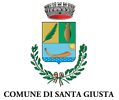<p>Central Sardinia is a mostly mountainous area whose morphology is embodied by Barbagia and the Gennargentu massif. Its savage, unspoilt places make it is one of the most charming areas on the island. The park, which also includes the mountain, is of great faunal importance. Typical species of Barbagia include the mouflon, the wild boar, the fox, the weasel and the golden eagle. The Province of Nuoro, the main town in the area, also boasts a considerable archaeological heritage, including the ‘Orolo’ nuraghe at Bortigali, the Tombs of the Madau Giants near Fonni and the Domus de Janas Sas Concas not far from Oniferi. Thanks to its Art Museum and to Costantino Nivola’s sculptures in the Piazza Sebastiano Satta Nuoro is also of great interest to enthusiasts of contemporary art. Well known nationally and internationally is the Grazia Deledda Literary Park, with the house where the writer was born. The best period to visit Central Sardinia is carnival, usually opening with the Festival of Anthony the Abbot, celebrated with a firework display at Norbello, and closing on Ash Wednesday. Celebrations are concentrated between Fat Thursday and Shrove Tuesday. Mysterious masks of ancient origin characterize the feast in the towns of Mamoiada, Ottana and Orotelli in Barbagia. The traditional carnival is celebrated at Ghilarza with su carrusu a s'antiga. An event worth mentioning is Cantande su Naschimentu, a choral festival held in January in the streets of Bonarcado. A major summer event is the ‘International Sculpture Symposium” of Fordongianus, calling upon international artists with a view to promoting local trachyte.</p>
The itinerary starts from the province of Nuoro, at the heart of Barbagia. This naturalistically varied region hosts two municipalities having a few Romanesque monuments of great interest in their territories: a visit is worthwhile to the former cathedral of San Nicola in Ottana and to the church dedicated to Saint John the Baptist, in Orotelli. Going southwards, the lake Omodeo (an artificial basin of river Tirso) comes into view. In this region, branching off through a system of uplands surrounding Ghilarza, a series of nice villages present some very interesting Romanesque evidence. They certainly include Ghilarza, with the Romanesque church of San Palmerio in town and the San Pietro di Zuri in its territory; Norbello, with Santa Maria della Mercede; Fordongianus, with San Lussorio and finally Bonarcado, where a whole complex comprising a Romanesque abbey and a Byzantine cruciform shrine is dedicated to the Virgin.
![]() Accommodation1724|1725 [2]
Accommodation1724|1725 [2]![]() Art and culture1543 [1]
Art and culture1543 [1]![]() Handicrafts and typical products1518 [1]
Handicrafts and typical products1518 [1]![]() Cultural centres1567 [1]
Cultural centres1567 [1]![]() Cinemas and theatres1591 [1]
Cinemas and theatres1591 [1]![]() Nature and wellness1615 [1]
Nature and wellness1615 [1]![]() Restaurants1651|1652 [2]
Restaurants1651|1652 [2]![]() Leisure1688 [1]
Leisure1688 [1]























